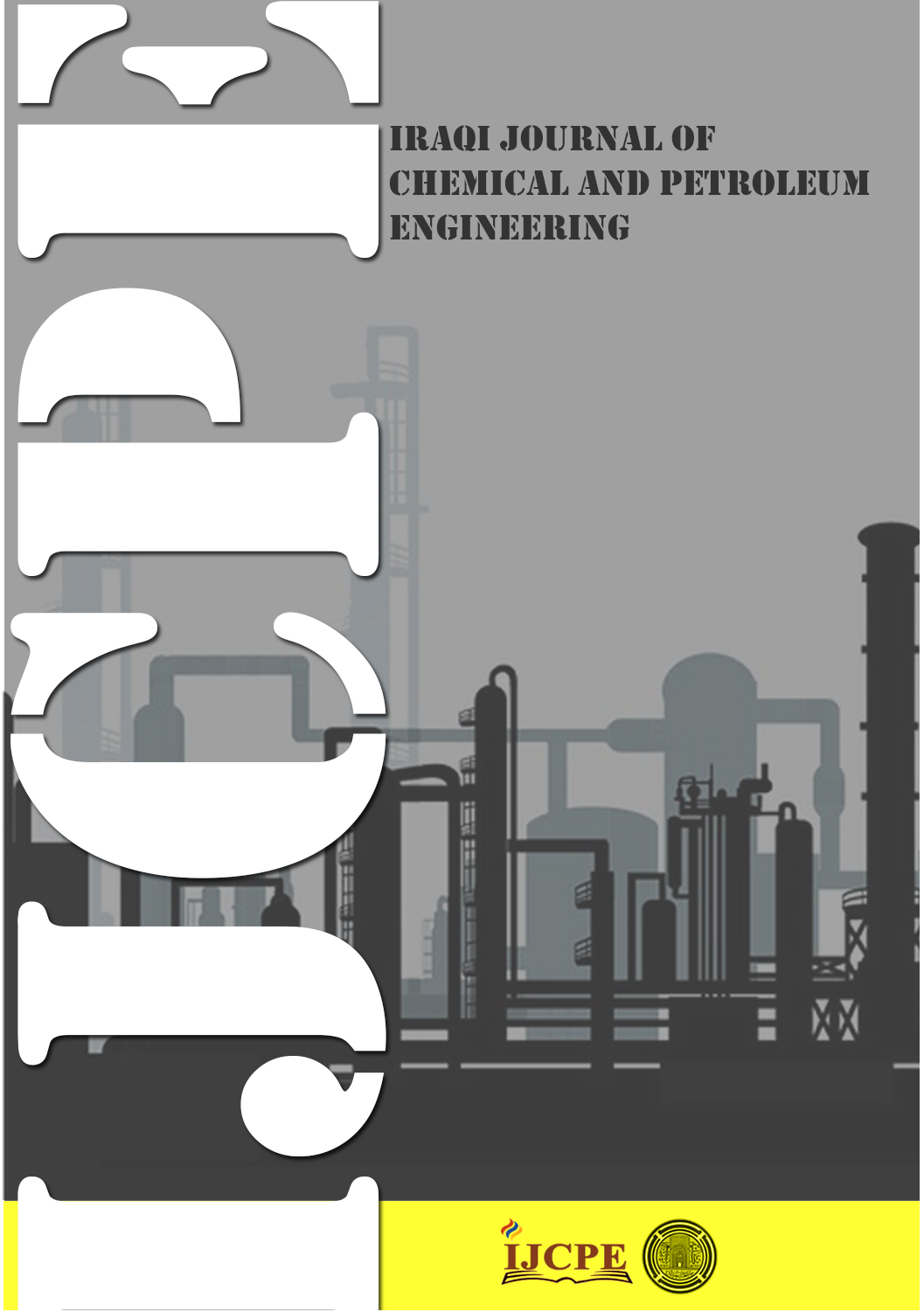Green-driven CaO catalyst for biodiesel production
DOI:
https://doi.org/10.31699/IJCPE.2025.2.7Keywords:
Biodiesel; mango fallen leaves; mixing; FFA content; transesterification; volume of reaction mixture; waste cooking oilAbstract
With increasing population and development, the resources of fossil fuels decreased, leading to the need to find alternative sources of energy. Furthermore, the use of fossil fuels is accompanied by several downsides including environmental fatality associated with toxic gas emissions from diesel engines and continuous increase of the price of diesel fuel. Biodiesel is one of the most important types of renewable energy that replaces the fossil fuel requirement (mineral diesel) and maintains eco-friendly sustainability. Calcium is an essential plant nutrient as it plays an important role in the formation of plant cell walls and membranes. Therefore, the fallen leaves of mango tree can be utilized to produce nano calcium oxide and serve as a highly effective catalyst in the transesterification process for biodiesel production. The green approach of mango leaves extract is more cost-effective, nontoxic, and environmentally friendly compared to other ways such as chemical and physical procedures. Transesterification reaction was conducted at fixed parameters of 65 ℃ reaction temperature, 3 wt.% catalyst concentration, 1.5 h reaction time, and 50% alcohol to oil weight ratio. The effects of several other parameters on the transesterification reaction were studied such as the volume of the reaction mixture, mixing speed, FFA% content, and methanol/ethanol weight ratio. The study found that methanol is more effective than ethanol as alcohol in transesterification reaction, and the FFA% has a slight effect on the catalyst to 1.8% FFA. The produced biodiesel was characterized by GC-MS and FT-IR analysis which indicate the presence of esters. The physical and fuel characteristics of the produced biodiesel were measured; it had a viscosity of 3.708 mm2/s, a density of 0.88869 g/cm3, and a flash point of 108 °C.
Received on 11/11/2024
Received in Revised Form on 09/12/2024
Accepted on 10/12/2024
Published on 30/06/2025
References
[1] W. T. Mohammed and M. F. A. Jabbar, “Esterification of Free Fatty Acid with High Chain Alcohol for Biodiesel Production Using Semi-Batch Reactive Distillation,” Iraqi Journal of Chemical and Petroleum Engineering, vol. 16, no. 4, pp. 11–19, 2015, https://doi.org/10.31699/IJCPE.2015.4.2
[2] A. Salih Abbas and T. Salah Othman, “Production and Evaluation of Biodiesel from Sheep Fats Waste,” Iraqi Journal of Chemical and Petroleum Engineering, vol. 13, no. 1, pp. 11–18, 2012, https://doi.org/10.31699/ijcpe.2012.1.2
[3] M. F. Abd and A. M. Al-Yaqoobi, “The feasibility of utilizing microwave-assisted pyrolysis for Albizia branches biomass conversion into biofuel productions,” International Journal of Renewable Energy Development, vol. 12, no. 6, pp. 1061–1069, Nov. 2023, https://doi.org/10.14710/ijred.2023.56907
[4] M. Masood Ahmad, A. Kumar, and R. Ranjan, “Recent Developments of Tidal Energy as Renewable Energy: An Overview,” River and Coastal Engineering, vol. 117, pp. 329–343, 2022, https://doi.org/10.1007/978-3-031-05057-2_29
[5] N. B. Nakkash and S. R. Al-Karkhi, “Production of Biodiesel Fuel from Oleic Acid and Comparison of its Properties with Petroleum Diesel,” Iraqi Journal of Chemical and Petroleum Engineering, vol. 13, no. 4, pp. 13–25, 2012, https://doi.org/10.31699/IJCPE.2012.4.2
[6] M. F. Abd, A. M. Al-yaqoobi, and W. S. Abdul-Majeed, “Catalytic Microwave Pyrolysis of Albizia Branches Using Iraqi Bentonite Clays,” Iraqi Journal of Chemical and Petroleum Engineering, vol. 25, no. 2, pp. 175–186, 2024, https://doi.org/10.31699/ijcpe.2024.2.16
[7] M. F. Abd and A. M. AL-yaqoobi, “The Potential Significance of Microwave-Assisted Catalytic Pyrolysis for Valuable Bio-Products Driven from Albizia Tree,” Applied Science and Engineering Progress, Jul. 2025, https://doi.org/10.14416/j.asep.2024.07.016
[8] S. S. Mahmood and A. M. Al-Yaqoobi, “Production of biodiesel by using CaO nano-catalyst synthesis from mango leaves extraction,” International Journal of Renewable Energy Development, vol. 13, no. 6, pp. 1025–1034, Nov. 2024, https://doi.org/10.61435/ijred.2024.60469
[9] B. A. Alshahidy and A. S. Abbas, “Preparation and modification of 13X zeolite as a heterogeneous catalyst for esterification of oleic acid,” AIP Conference Proceedings, vol. 2213, no. March, 2020, https://doi.org/10.1063/5.0000171
[10] S. Jurmot and A. S. Abbas, “Kinetics and Activation Complex Thermodynamic Study of the Acidity Removal of Oleic Acid via Esterification Reaction on Commercial 13X Zeolite,” Iraqi Journal of Chemical and Petroleum Engineering, vol. 23, no. 3, pp. 43–49, 2022, https://doi.org/10.31699/ijcpe.2022.3.6
[11] R. Ali Abbas and H. M. Flayeh, “Bioethanol (Biofuel) Production from Low Grade Dates,” Iraqi Journal of Chemical and Petroleum Engineering, vol. 20, no. 4, pp. 41–47, 2019, https://doi.org/10.31699/ijcpe.2019.4.7
[12] M. Asif, F. Javed, M. Younas, M. A. Gillani, W. B. Zimmerman, and F. Rehman, “Investigating biodiesel production from Chicken fat oil using bi-functional catalysts and microbubble mediated mass transfer,” Fuel, vol. 358, p. 130125, 2024, https://doi.org/10.1016/j.fuel.2023.130125
[13] N. Ahmad et al., “Biodiesel production intensification through microbubble mediated esterification,” Fuel, vol. 253, pp. 25–31, 2019, https://doi.org/10.1016/j.fuel.2019.04.173
[14] M. Hussien and H. Abdul hameed, “Biodiesel production from used vegetable oil (sunflower cooking oil) using eggshell as bio catalyst,” Iraqi Journal of Chemical and Petroleum Engineering, vol. 20, no. 4, pp. 21–25, 2019, https://doi.org/10.31699/ijcpe.2019.4.4
[15] A. Huda et al., “Biodiesel production from waste cooking oil using KOH / HY-type nano-catalyst derived from silica sand,” Biofuels, vol. 15, no. 5, pp. 1–17, 2024, https://doi.org/10.1080/17597269.2023.2267849
[16] S. Mahmood and A. M. AL Yaqoobi, “Microwave Assisted Production of Biodiesel Using CaO Nano-catalyst Produced from Mango Fallen Leaves Extract,” Journal of Ecological Engineering, vol. 26, no. 1, 2025, https://doi.org/10.12911/22998993/195650
[17] B. Changmai, C. Vanlalveni, A. P. Ingle, R. Bhagat, and L. Rokhum, “Widely used catalysts in biodiesel production: A review,” RSC Advance, vol. 10, no. 68, pp. 41625–41679, 2020, https://doi.org/10.1039/d0ra07931f
[18] J. Mercy Nisha Pauline, R. Sivaramakrishnan, A. Pugazhendhi, T. Anbarasan, and A. Achary, “Transesterification kinetics of waste cooking oil and its diesel engine performance,” Fuel, vol. 285, p. 119108, Feb. 2021, https://doi.org/10.1016/j.fuel.2020.119108
[19] P. R. Pandit and M. H. Fulekar, “Egg shell waste as heterogeneous nanocatalyst for biodiesel production: Optimized by response surface methodology,” Journal of Environmental Managment, vol. 198, pp. 319–329, Aug. 2017, https://doi.org/10.1016/j.jenvman.2017.04.100
[20] S. Sulaiman, S. N. Khairudin, P. Jamal, and M. Z. Alam, “Fish Bone Waste as Catalyst for Biodiesel Production,” Journal of Tropical Resources and Sustainable Science, vol. 3, no. 1, pp. 180–184, Jul. 2015, https://doi.org/10.47253/jtrss.v3i1.554
[21] A. Buasri, T. Rattanapan, C. Boonrin, C. Wechayan, and V. Loryuenyong, “Oyster and Pyramidella Shells as Heterogeneous Catalysts for the Microwave-Assisted Biodiesel Production from Jatropha curcas Oil,” Journal of Chemistry, vol. 2015, pp. 1–7, 2015, https://doi.org/10.1155/2015/578625
[22] Y. C. Lin, K. T. T. Amesho, C. E. Chen, P. C. Cheng, and F. C. Chou, “A cleaner process for green biodiesel synthesis from waste cooking oil using recycled waste oyster shells as a sustainable base heterogeneous catalyst under the microwave heating system,” Sustainable Chemistry and Pharmacy, vol. 17, Sep. 2020, https://doi.org/10.1016/j.scp.2020.100310
[23] S. Kaewdaeng, P. Sintuya, and R. Nirunsin, “Biodiesel production using calcium oxide from river snail shell ash as catalyst,” Energy Procedia, Elsevier Ltd, 2017, pp. 937–942. https://doi.org/10.1016/j.egypro.2017.10.057
[24] K. N. Krishnamurthy, S. N. Sridhara, and C. S. Ananda Kumar, “Optimization and kinetic study of biodiesel production from Hydnocarpus wightiana oil and dairy waste scum using snail shell CaO nano catalyst,” Renewable Energy, vol. 146, pp. 280–296, Feb. 2020, https://doi.org/10.1016/j.renene.2019.06.161
[25] K. C. Mmusi, S. Odisitse, and F. Nareetsile, “Comparison of CaO-NPs and Chicken Eggshell-Derived CaO in the Production of Biodiesel from Schinziophyton rautanenii (Mongongo) Nut Oil,” Journal of Chemistry, vol. 2021, 2021, https://doi.org/10.1155/2021/6663722
[26] M. Kumar et al., “Mango (Mangifera indica l.) leaves: Nutritional composition, phytochemical profile, and health-promoting bioactivities,” Antioxidants, vol. 10, no. 2, pp. 1–23, 2021, https://doi.org/10.3390/antiox10020299
[27] B. A. Ali, A. A. Alfa, K. B. Tijani, E. T. Idris, U. S. Unoyiza, and Y. Junaidu, “Nutritional Health Benefits and Bioactive Compounds of Mangifera indica L (Mango) Leaves Methanolic Extracts,” Asian Plant Research Journal, pp. 41–51, Sep. 2020, https://doi.org/10.9734/aprj/2020/v6i230126
[28] V. Jadhav et al., “Green Synthesized Calcium Oxide Nanoparticles (CaO NPs) Using Leaves Aqueous Extract of Moringa oleifera and Evaluation of Their Antibacterial Activities,” Journal of Nanomaterial, vol. 2022, pp. 1–7, 2022, https://doi.org/10.1155/2022/9047507
[29] M. H. Nazir, M. Ayoub, R. B. Shamsuddin, I. Zahid, and Zulqarnain, “Sulfonated Activated Sugarcane Bagasse as Heterogeneous Catalyst for Biodiesel Production From Waste Cooking Oil via Microwave Irradiation,” Proceedings of the Third International Conference on Separation Technology 2020 (ICoST 2020), vol. 200, no. ICoST, pp. 286–291, 2021, https://doi.org/10.2991/aer.k.201229.037
[30] V. Miyuranga, U. Arachchige, R. Jayasinghe, and N. A. Weerasekara, “Impact of the Waste Cooking Oil Quality on Biodiesel,” ITUM Research Symposium, no. October, 2021.
[31] R. Mat, R. A. Samsudin, M. Mohamed, and A. Johari, “Solid Catalysts and Their Application in Biodiesel Production,” Bulletin of Chemical Reaction Engineering & Catalysis, vol. 7, no. 2, pp. 142–149, 2012, https://doi.org/10.9767/bcrec.7.2.3047.142-149
[32] J. M. Encinar, J. F. González, A. Pardal, and G. Martínez, “Rape oil transesterification over heterogeneous catalysts,” Fuel Processing Technology, vol. 91, no. 11, pp. 1530–1536, Nov. 2010, https://doi.org/10.1016/j.fuproc.2010.05.034
[33] L. C. Meher, D. Vidya Sagar, and S. N. Naik, “Technical aspects of biodiesel production by transesterification - A review,” Renewable Sustainable Energy Reviews, vol. 10, no. 3, pp. 248–268, 2006, https://doi.org/10.1016/j.rser.2004.09.002
[34] D. Y. C. Leung, X. Wu, and M. K. H. Leung, “A review on biodiesel production using catalyzed transesterification,” Applied Energy, vol. 87, no. 4, pp. 1083–1095, Apr. 2010, https://doi.org/10.1016/j.apenergy.2009.10.006
[35] S. Jain and M. P. Sharma, “Biodiesel production from Jatropha curcas oil,” Renewable Sustainable Energy Reviews, vol. 14, no. 9, p. 3140, 2010, https://doi.org/10.1016/j.rser.2010.07.047
[36] A. V. Tomasevic and S. S. Siler-Marinkovic, “Methanolysis of used frying oil,” Fuel Processing Technology, vol. 81, no. 1, pp. 1–6, Apr. 2003, https://doi.org/10.1016/S0378-3820(02)00096-6
[37] W. Zhou, S. K. Konar, and D. G. B. Boocock, “Ethyl esters from the single‐phase base‐catalyzed ethanolysis of vegetable oils,” Journal of American Oil Chemists Society, vol. 80, no. 4, pp. 367–371, Apr. 2003, https://doi.org/10.1007/s11746-003-0705-1
[38] H. Elias, M. Dreher, S. Neitzel, and H. Volz, “Characterization of Alcohol Solvents by the Empirical Polarity Parameters AN, Z, and E T (30),” Zeitschrift für Naturforschung B, vol. 37, no. 6, pp. 684–687, Jun. 1982, https://doi.org/10.1515/znb-1982-0603
[39] I. A. Musa, “The effects of alcohol to oil molar ratios and the type of alcohol on biodiesel production using transesterification process,” Egyption Journal of Petroleum, vol. 25, no. 1, pp. 21–31, Mar. 2016, https://doi.org/10.1016/j.ejpe.2015.06.007
[40] D. Y. C. Leung and Y. Guo, “Transesterification of neat and used frying oil: Optimization for biodiesel production,” Fuel Processing Technology, vol. 87, no. 10, pp. 883–890, Oct. 2006, https://doi.org/10.1016/j.fuproc.2006.06.003
[41] M. Peris, “Understanding Le Châtelier’s principle fundamentals: five key questions,” Chemistry Teacher International, vol. 4, no. 3, pp. 203–205, Oct. 2022, https://doi.org/10.1515/cti-2020-0030
[42] A. Munack, “Books: Biodiesel - A comprehensive handbook. Martin Mittelbach, Claudia Remschmidt (Ed.),” Biotechnology Journal, vol. 1, no. 1, pp. 102–102, Jan. 2006, https://doi.org/10.1002/biot.200690003
[43] R. Iyyaswami, V. K. Halladi, S. R. Yarramreddy, and S. Malur Bharathaiyengar, “Microwave-assisted batch and continuous transesterification of karanja oil: Process variables optimization and effectiveness of irradiation: Microwave-assisted transesterification of karanja oil,” Biomass Conversion and Biorefinery, vol. 3, no. 4, pp. 305–317, 2013, https://doi.org/10.1007/s13399-013-0080-8
[44] M. F. F. Kamaronzaman, H. Kahar, N. Hassan, M. F. Hanafi, and N. Sapawe, “Analysis of biodiesel product derived from waste cooking oil using fourier transform infrared spectroscopy,” Materials Today Proceedings, vol. 31, pp. 329–332, 2020, https://doi.org/10.1016/j.matpr.2020.06.088
[45] S. N. Rabelo, V. P. Ferraz, L. S. Oliveira, and A. S. Franca, “FTIR Analysis for Quantification of Fatty Acid Methyl Esters in Biodiesel Produced by Microwave-Assisted Transesterification,” International Journal of Environmental Science Development, vol. 6, no. 12, pp. 964–969, 2015, https://doi.org/10.7763/IJESD.2015.V6.730
[46] M. Farooq, A. Ramli, and D. Subbarao, “Biodiesel production from waste cooking oil using bifunctional heterogeneous solid catalysts,” Journal of Cleaner Production, vol. 59, pp. 131–140, 2013, https://doi.org/10.1016/j.jclepro.2013.06.015
[47] M. Tariq et al., “Identification, FT-IR, NMR (1H and 13C) and GC/MS studies of fatty acid methyl esters in biodiesel from rocket seed oil,” Fuel Processing Technology, vol. 92, no. 3, pp. 336–341, 2011, https://doi.org/10.1016/j.fuproc.2010.09.025
[48] J. Goli and O. Sahu, “Development of heterogeneous alkali catalyst from waste chicken eggshell for biodiesel production,” Renewable Energy, vol. 128, pp. 142–154, Dec. 2018, https://doi.org/10.1016/j.renene.2018.05.048
[49] F. Tahira, S. T. Hussain, S. D. Ali, Z. Iqbal, and W. Ahmad, “Homogeneous Catalysis of High Free Fatty Acid Waste Cooking Oil to Fatty Acid Methyl Esters (Biodiesel),” International Journal of Energy and Power, vol. 1, no. 1, pp. 31–36, 2012.
Downloads
Published
Issue
Section
License
Copyright (c) 2025 The Author(s). Published by College of Engineering, University of Baghdad.

This work is licensed under a Creative Commons Attribution 4.0 International License.













